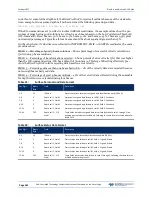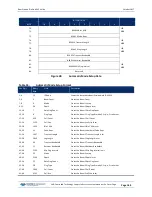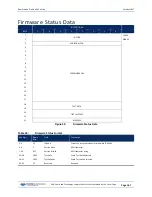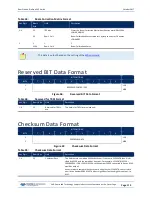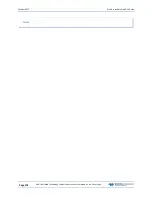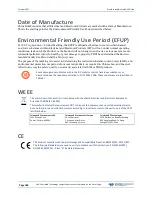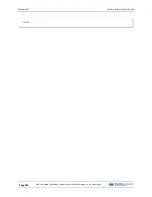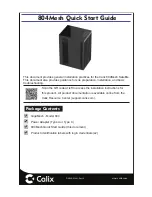
October 2017
RiverPro and RioPro ADCP Guide
Page 176
EAR-Controlled Technology Subject to Restrictions Contained on the Cover Page.
Decoding an RiverPro/RioPro Ensemble
Use the following information to help write your own software.
Rules for the BroadBand Data Format PD0
1. All data types (i.e. fixed leader, variable leader, velocity, echo intensity, correlation, percent good,
etc.) will be given a specific and unique ID number. The table below shows some of the most com-
mon IDs.
Table 46:
Common Data Format IDs
ID
Description
0x7F7F
Header
0x0000
Fixed Leader
0x0080
Variable Leader
0x0100
Velocity Profile Data
0x0200
Correlation Profile Data
0x0300
Echo Intensity Profile Data
0x0400
Percent Good Profile Data
0x0500
Profile Status Data
0x0600
Bottom Track Data
2. Once a data type has been given an ID number and the format of that data has been published we
consider the format for each field has being fixed. Fixed refers to units used for a given field, the
number of bytes in a given field, and the order in which the fields appear within the data type.
Fixed does not refer to the total number of bytes in the data type - see Rule 3.
3. Data may be added to an existing data type only by adding the bytes to the end of the data format.
As an example, the variable leader data contains information on ensemble number, time, heading,
pitch, roll, temperature, pressure, etc. The format for the bytes 1-53 are now specified by changes
added in support to the RiverPro/RioPro. If additional sensor data is to be added to the variable
leader data then it must be added to the end of the data string (bytes 54-x as an example).
4. The order of data types in an ensemble is not fixed. That is there is no guarantee that velocity data
will always be output before correlation data.
5. The header data will include the number of data types in the files and the offset to each ID num-
ber for each data type.
6. The total number of the bytes in an ensemble minus the 2-byte checksum will be included in the
header.

